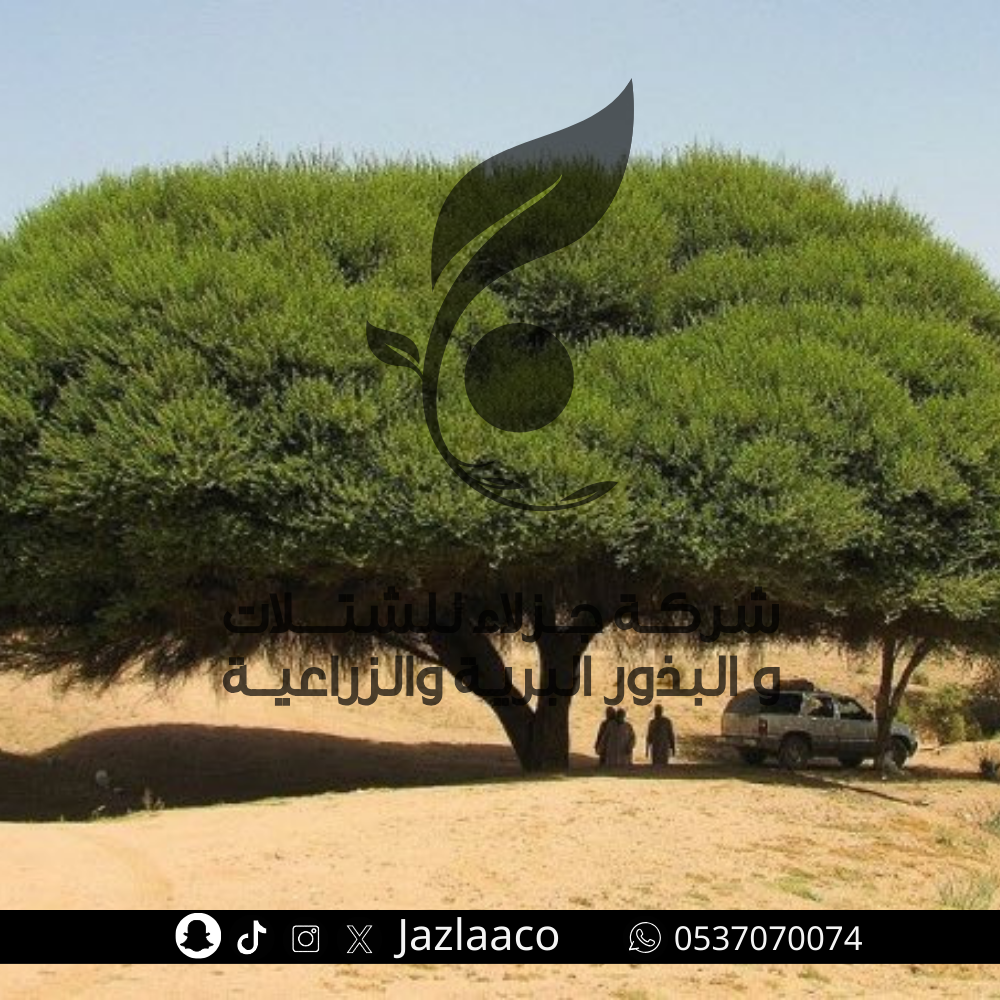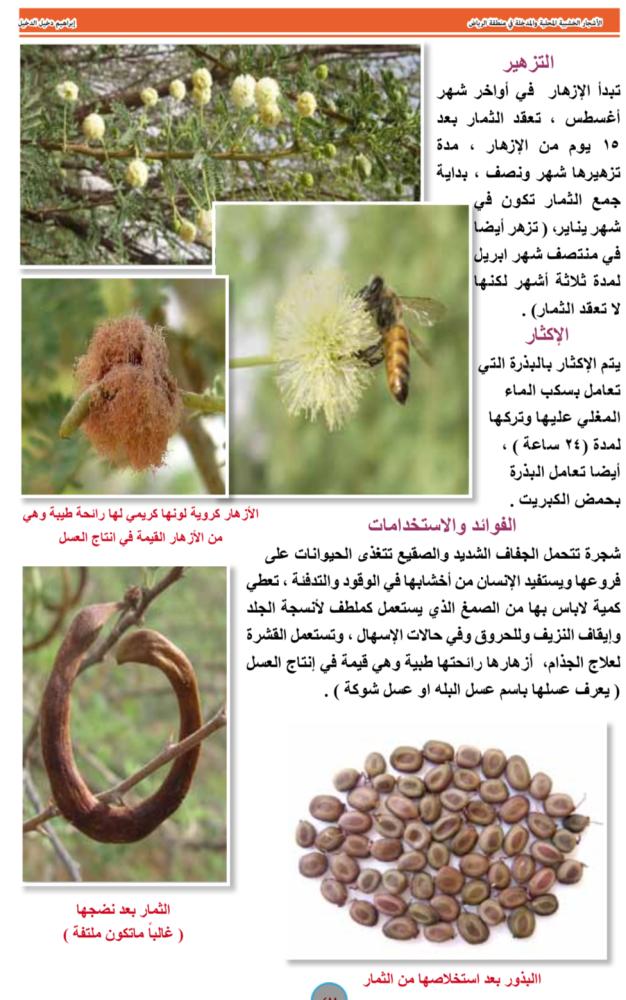Botanical description
A thorny tree that reaches a height of more than (10 meters), grows in the Najd region in the Kingdom of Saudi Arabia, and is very similar to the Iraqi acacia, but differs from it in its twisted horns, dark gray trunk, and its branches pointing upwards, unlike the Iraqi acacia, whose branches grow horizontally. The leaves are compound, pinnate, doubled from (2-8 pairs) of pinnates, and each pinnately has (8-20 pairs) of leaflets. The thorns are large (6 meters) and whitish in color. The flowers are cream-colored, about (1 cm) in diameter, and have a medicinal smell. The fruit is a long (18 cm) brown pod. The seeds are oval-shaped and greenish-brown in color.
Flowering
Flowering begins in late August, fruit sets 15 days after flowering, flowering period is a month and a half, fruit collection begins in January (it also flowers in mid-April for three months but does not set fruit).
multiply
Propagation is done by treating the seed by pouring boiling water over it and leaving it for 24 hours. The seed is also treated with sulfuric acid.
Benefits and Uses
A tree that can withstand severe drought and frost. Animals feed on its branches, and humans use its wood for fuel and heating. It produces a fair amount of gum, which is used as a softener for skin tissue, to stop bleeding, for burns, and in cases of diarrhea. The bark is used to treat leprosy. Its flowers have a medicinal scent and are valuable in the production of honey (its honey is known as “balah honey” or “thorn honey”).



